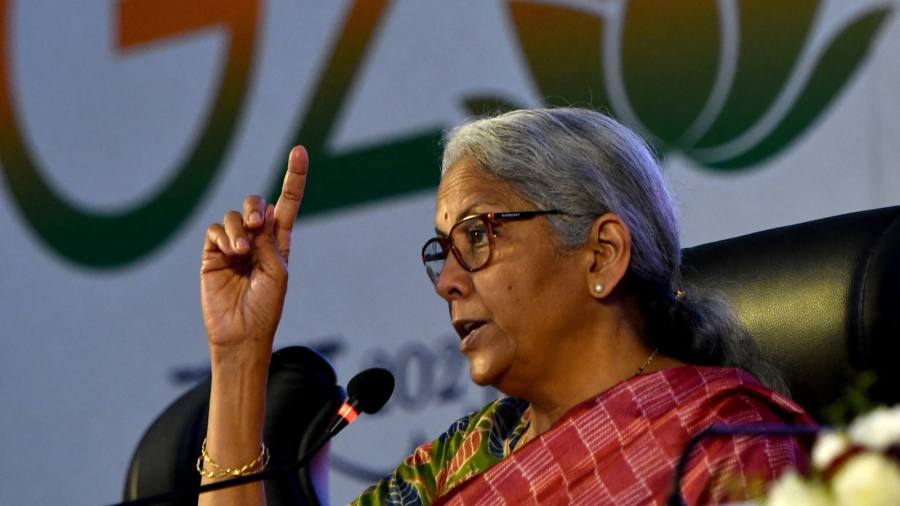The United Nations declared 2011 as the International Year of Chemistry (IYC) to honour the 100th Anniversary of the Nobel award in Chemistry to Marie Curie and also to commemorate the contributions of chemical sciences in the progress of human civilization. Chemicals and molecules were celebrated and polymers (more commonly known as plastics) became the most sought-after molecules. Modern society is inconceivable without plastics — extensively used in almost every sector from packaging, consumer products, construction, textiles, transportation, electrical and electronics and industrial machinery to say a few. Plastics are used extensively as they are cost-effective, lightweight, with translucent, transparent and opaque properties, their poor conductivity of heat and electricity, resistance to corrosion and the fact that they can be moulded into all kinds of shapes.

Twelve years later since IYC, the earth is inundated with plastics. They can be found on land and in the ocean in almost equal measure. Unsurprisingly, the United Nations has declared ‘#Beat Plastic Pollution’ as the central theme of this year’s World Environment Day (WED) — celebrated worldwide on June 5th to raise awareness about environmental issues and to take collaborative actions for a sustainable future. June 5th marks the first day of the United Nations Conference on the Human Environment, which was held in 1972 in Stockholm. Later, June 5th was declared as the WED by the United Nations (UN) and the first WED was held in 1973. While WED is celebrated worldwide, a single country leads the campaign. This year, World Environment Day 2023 is hosted by Côte d’Ivoire with support from the Netherlands.
Widespread use of plastics, unsustainable ways of disposal of plastic waste and their abilities to resist degradation in the natural environment have made plastic the most dreaded product on the Earth. Plastics are produced from natural gas and crude oil through a process known as cracking.
Plastics are made from raw materials like natural gas, oil or plants, which are refined into ethane and propane. These hydrocarbons are then treated with heat in a process called “cracking” which turns them into ethylene and propylene. ‘Cracking’ converts large molecules of hydrocarbons into smaller molecules, known as monomers, which are then joined in large numbers to make polymers or plastics. A small percentage (4 to 8%) of global oil consumption is for manufacturing plastics, as per a 2016 report by the World Economic Forum. Once produced, they persist in the environment for hundreds of years. On average, a plastic bottle can persist in the environment for more than 450 years. Similarly, a plastic fishing line can last in the environment for more than 600 years.
Global production of plastics has risen from 1.5 million metric tons in 1950 to 390 million metric tons in the year 2021, as per a Statista report. It is estimated that human beings use about 1.2 million plastic bottles in a minute. More than 90 percent of these plastic bottles are not recycled, as per a 2017 Euromonitor International’s global packaging trends report.
Similarly, most of the five trillion plastic bags and the 500 billion plastic cups that the world uses annually are not recycled, as per the UN’s World Environment Programme.
Plastics can be broken down into smaller particles through photo-degradation and UV radiation. Plastic particles with less than 5 millimetres in diameter are termed microplastics — which are equally dangerous. Their smaller size makes them easy to digest, making them dangerous for all animal species including humans. They have clogged up every ecosystem, whether land or the seas.
By integrating metals and other compounds into the polymers, several types of plastics are made for diverse purposes. Quite often these metals and other compounds make plastics more dangerous. In India, plastics are used majorly in the packaging of all types – rigid and flexible packaging. The other uses of plastics are in construction, agriculture, households, automobiles, electricity, etc. Out of this, the major concern is plastic waste.
Generally, 10-20 percent of used plastics end up being plastic waste every year. Since packaging has lower product life, it tends to contribute more towards plastic waste generation. According to estimates, almost half of the plastic waste comes from packaging plastics. The Plastic Waste Management (Second Amendment) Rules, 2022, also prohibit the manufacture, import, stocking, distribution, sale and use of plastic carry bags having thicknesses less than one hundred and twenty microns (120 microns. Of all the plastic waste generated, a minuscule percentage is recycled and the rest are dumped in landfills or water bodies.
It is a misconception that plastics can be recycled many times. According to an estimate by the UN Environment Programme, less than 12% of plastics have been recycled across the world. Recycled plastics are inferior in quality with reports suggesting that, after 1-2 recycles, plastics eventually find their way to municipal waste. So, recycling only delays the waste generation, it does not eliminate them. Following this, they end up in the municipal waste stream. From there, if incinerated, toxic gases and greenhouse gases (GHGs) are emitted into the atmosphere; or if left in the landfills, heavy metals leach out to the groundwater causing pollution. Otherwise, the emitted greenhouse gases, if transported by water become part of the oceans.
According to 2021 estimates by Our World in Data, 80% of the plastic waste in oceans enters through rivers and coastlines while the remaining waste has marine origins such as fishing activity, including discarded nets, fishing lines, and abandoned vessels. Plastic wastes in marine ecosystems have caused havoc to the marine ecosystems. They have caused death to marine animals either through entanglement with fishing nets or through ingestion of plastic debris, after mistaking them for food. In fact, the way plastic wastes have invaded oceans, the surface water of oceans can aptly be described as ‘plastic soup’.
Plastic pollution, therefore, has assumed a gigantic challenge. All-out efforts need to be made to reduce single-use plastics and promote recycling of plastic waste by raising public awareness, financial incentives and stricter regulation. Research and development of eco-friendly alternatives to plastic should be supported. Improvement in waste management systems and recycling infrastructure is of paramount importance to tackle plastic pollution. It requires sincere efforts from all stakeholders such as individuals, governments, industries, and communities. The science of plastic pollution and the way it creates havoc on the ecosystem and human health is known; the technology for a better recycling process is there. All we need to do is to adopt a multi-faceted approach involving all stakeholders to bring some real change at the ground level.
Dr Abhay Kumar is assistant professor at Central Institute of Educational Technology and Dr Sudesh Yadav is professor at the School of Environmental Sciences, Jawaharlal Nehru University.
The views expressed here are personal















